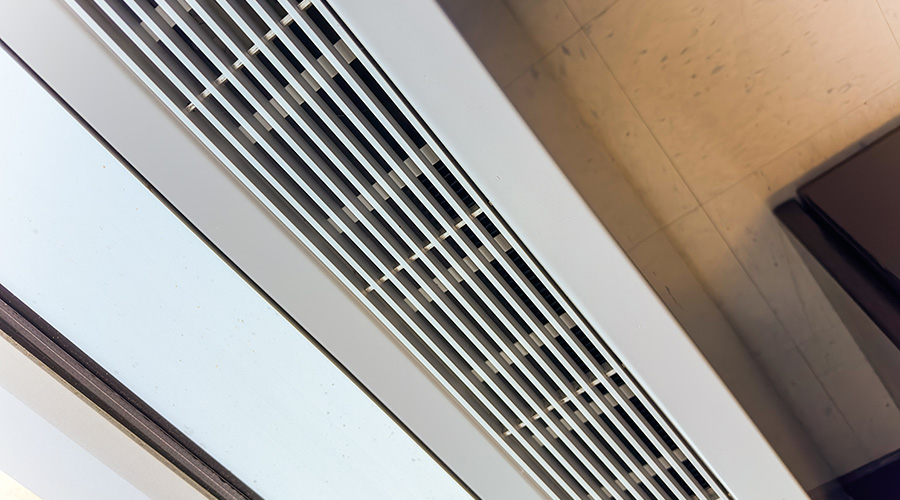IAQ: Review Specification Documents, Seal HVAC Systems
Let's say you have committed to making your facilities sustainable by improving IAQ. Are you doing what it takes to make that commitment a reality? For example, during a retrofit, how often do you review specification documents to identify building-materials sources and devote enough time to understanding results of toxicity tests?
Do not be shortsighted. Manufacturers often perform material-safety tests in controlled laboratory settings, which is only applicable if your buildings offer the same temperatures, humidity levels, ventilation, etc., as the laboratory. Dig a little deeper into materials' contents to be sure you are protecting occupants and visitors from chemical exposure.
Also, are workers who perform retrofits sealing HVAC systems during renovations and new construction to prevent toxic substances from infiltrating the occupied space? The Leadership in Energy and Environmental Design (LEED) rating system offers one point for this critical, long-term health measure, but it is not a prerequisite. So take the initiative, and stay involved to ensure workers properly perform this step in the process.
One engineering sub-contractor sealed ducts with nothing more than newspaper and cellophane tape. Really? This quick fix might have met a LEED requirement on paper, but it did little to prevent minute amounts of potentially toxic chemicals from permeating this porous material and eventually blowing through the ducts into the occupied space.
As the project manager, you have to communicate not only what you're doing to improve IAQ but also your reasons for doing it. Your staff and the entire project team, including consultants, must know your priorities if you are serious about improving facility sustainability and IAQ.
Why? One LEED-pursuing project met the VOC requirements at construction completion, but during move-in, a piece of furniture took a chunk out of a wall. The person who purchased paint for the repair specified the right color, but he didn't know the original product contained no VOCs. Because air in the space wasn't flushed out, occupants complained for two weeks after move-in that they could smell the paint in a supposedly no-VOC space.
Simply paying attention to a product's durability isn't necessarily the best route, either. A roofing product that promises long performance life might be intriguing, but new materials are usually durable because they contain more adhesives and chemically complex bonds.
These contents make them less likely to disintegrate or degrade over time, but maybe it's better for a product to wear out and be replaced than to allow the harmful chemicals to remain in the building longer. Modular components can address this issue, allowing workers to replace just a small, worn-out portion of a larger system.
Related Topics:













